Search
Search Results

Image
Gold Ring from Mycenae
A Mycenaean gold ring depicting a hunting scene. From Grave Circle A, Mycenae, 16th century BCE. (National Archaeological Museum, Athens)
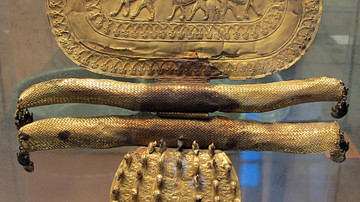
Image
Etruscan Gold Fibula, Cerveteri
A gold fibula decorated with five lions (upper portion) and 50 ducks (lower portion) from the Etruscan Regoliini-Galassi Tomb at Cerveteri. 7th century BCE. (Museo Gregoriano Etrusco, Vatican Museums, Rome)
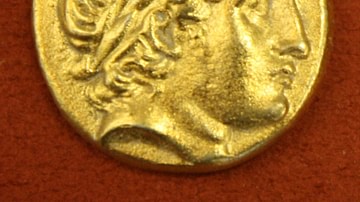
Image
Apollo, Macedonian Gold Stater
Macedonian gold stater, 359-336 BCE.
Obverse: Apollo
Reverse: Charioteer
Alpha Bank Numismatics Collection, Kerkyra, Corfu.
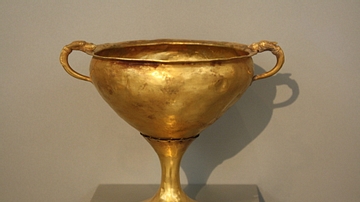
Image
Mycenaean Gold Cup
A gold Mycenaean cup with handles ending in dog's heads. 15th century BCE from Grave circle A, Mycenae. (National Archaeological Museum, Athens)
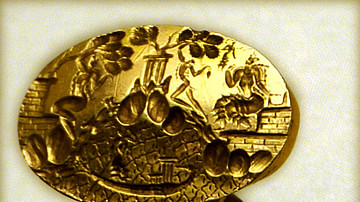
Image
Minoan Gold Ring
An engraved gold ring from the Minoan civilization on Crete, 15-14th century BCE. The ring probably originates from Knossos and depicts the epiphany of a goddess: seated in a shrine, floating in the air and standing in a boat. The hoop is...

Image
Macedonian Gold Stater
Macedonian gold stater from the reign of Philip II, 359-356 BCE. O: Head of Apollo. R: Charioteer driving a racing biga.
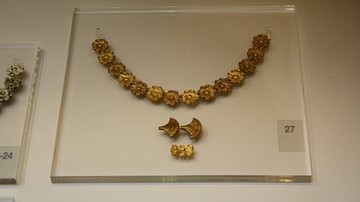
Image
Mycenaean Gold Jewellery Pieces
Strings of gold beads in the form of rosettes, papyrus and lillies from Mycenae area (14th century BCE). Nafplio Archaeological Museum.

Image
Aerial View, Gold Beach
An aerial view of Gold Beach during the D-Day Normandy Landings of 6 June 1944. The smoke is from German defensive positions struck by Allied naval and air bombardment. (Imperial War Museums)
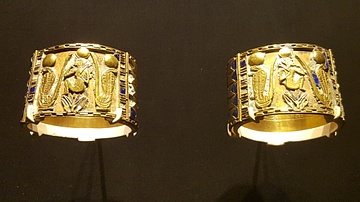
Image
Egyptian Gold Bracelets
Egyptian inlaid gold bracelets belonging to Prince Nimlot, one of the sons of Sheshonq I, the first king of the 22nd Dynasty. About 940 BCE. Said to be from Sa el-Haggar (Sais), Egypt. From The British Museum, (photo taken at The Powerhouse...
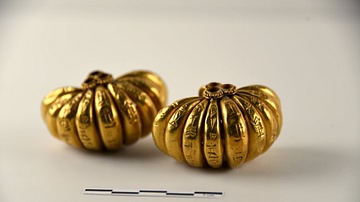
Image
Gold Earrings, Ur III, Mesopotamia
The convex and carved surfaces of the earrings. Each earring is composed of nine lunar-shaped segments forming a flattened half- ball. The cuneiform signs run vertically from above downward, starting from the right end. A pair of gold earrings...